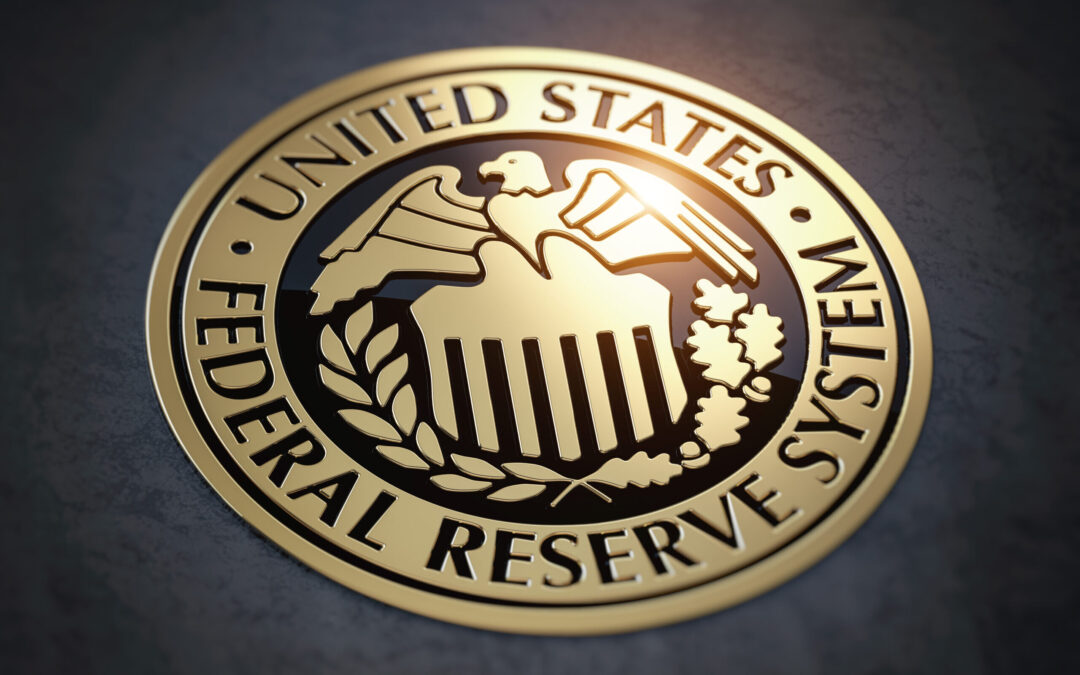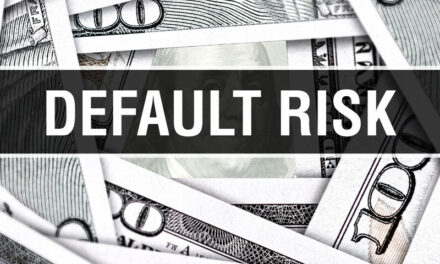Change of Plans
On June 1, 2022, the Jay Powell Chaired Federal Reserve formally commenced Quantitative Tightening (QT). The Fed’s balance sheet had topped $8.9 trillion. Consumer price inflation was rocketing towards a 40 year high.
“Brace yourself,” advised JPMorgan Chase CEO Jamie Dimon at the time.
The master plan was for the Fed to reduce its holdings of Treasuries and mortgage-backed securities by a combined $47.5 billion per month for the first three months. Then, in September 2022, this monthly reduction was increased to $95 billion (i.e. $60 billion in Treasuries and $35 billion in mortgage-backed securities).
Aside from the abrupt $400 billion spike in March of 2023, when Silicon Valley Bank, Signature Bank, First Republic Bank all failed in rapid succession, QT has continued according to plan. Today, the Fed’s balance sheet stands at just under $7.7 trillion.
The next FOMC meeting is on January 30 and 31. And the scuttlebutt from the Wall Street Journal is that the Fed’s now considering a change of plans:
Fed officials are to start deliberations on slowing, though not ending, that so-called quantitative tightening as soon as their policy meeting this month. It could have important implications for financial markets.
The Fed can shrink its holdings by selling bonds or, as it has preferred, allowing bonds to mature and “run off” its balance sheet without buying new ones. Runoff increases the supply of bonds that investors must absorb, putting upward pressure on long-term interest rates. Slowing runoff reduces that upward pressure.
At this point, the Fed has made a small $1.2 trillion dent in getting its funny money financed assets off its books. But it is nowhere close to returning to pre-Covid levels of $4 trillion or pre-Great Recession levels of $900 billion.
And given the Fed will likely move to taper the rate of QT over the next few months, it will be near impossible to ever shrink its balance sheet to where it stood in January 2020.
What to make of it…
Unconscious Biases
Undoing the radical and extreme money printing gala that took place from 2020-22 was never a realistic proposition. The failure to remove the massive pile of reserves added to the Fed’s balance sheet during the 2008-13 money printing episode had already demonstrated this.
John Maynard Keynes, Fabian socialist and the godfather of modern day economic planning, in his 1935 work, The General Theory of Employment, Interest and Money, wrote:
Practical men, who believe themselves to be quite exempt from any intellectual influence, are usually the slaves of some defunct economist.
If you recall, in late November 2008, Fed Chair Ben Bernanke permanently sold American savers and workers down the river. He couldn’t resist. He was compelled by his unconscious biases.
Bernanke, a self-satisfied Great Depression history buff of the highest academic lineage, peered back 80-years. What he thought he saw scared the heebie-jeebies out of him. To his attuned eye, he observed several credit market parallels to the early-1930s. He then made a preconceived diagnosis.
After that, he dusted off his desktop copy of A Monetary History of the United States, by Milton Friedman and Anna Schwartrz, turned to the chapter on the Great Depression, and got to work inflating the money supply. In doing so, he permanently disfigured the world.
Bernanke first let the quantitative easing (QE) cat out of the bag with the purchase of $600 billion in mortgage-backed securities and Treasuries. He bought them with digital monetary credits created out of thin air. The intent was to bailout the big banks on Wall Street.
Pro-QE, Anti-QT
By March 2009, Bernanke had jumped the Fed’s balance sheet from $900 billion to $1.75 trillion. Then, over the next five years, he ballooned it out to $4.5 trillion. All the while, he stroked his ego with claims he was preventing a repeat of the Great Depression.
Did it never occur to Bernanke that his market intervention, like Benjamin Strong’s coup de whisky in the 1920s, was preventing a much-needed financial liquidation and asset price rebalancing? Or that his actions were further distorting the economy and setting it up for an even greater crisis?
More than likely, Bernanke knew exactly what he was doing. Remember, the Fed works for the big banks and big money interests on Wall Street. Not the little guy on Main Street.
And when the day came to straighten things out Bernanke had left the building. Janet Yellen, now Treasury Secretary, formerly Fed Chair from 2014 to 2018, was tasked with contracting the Fed’s $4.5 trillion balance sheet eight years after the Great Recession officially ended.
Jamie Dimon is fearful of QT. He’s a big banker. He’s pro-QE and anti-QT. Similar to his 2022 recommendation to “brace yourself,” Dimon, in 2017, advised caution. Speaking at a conference in Paris on Tuesday, July 11, 2017, Dimon remarked that:
We’ve never had QE like this before, we’ve never had unwinding like this before. Obviously that should say something to you about the risk that might mean, because we’ve never lived with it before.
When that (QT) happens of size or substance, it could be a little more disruptive than people think. We act like we know exactly how it’s going to happen and we don’t.
But not to fear. Yellen had her master plan…
Yellen’s Epic Fail
On Wednesday, September 20, 2017, as the Fed was gearing up for QT, Fed Chair Yellen attempted to clarify how the Fed was going to go about it. Following the two day FOMC meeting, the Fed issued its customary statement.
Therein, it mentioned that balance sheet normalization would be initiated in October of that year. The referenced implementation note outlined how the Fed would contract its balance sheet:
Effective in October 2017, the Committee directs the [Open Market] Desk to roll over at auction the amount of principal payments from the Federal Reserve’s holdings of Treasury securities maturing during each calendar month that exceeds $6 billion, and to reinvest in agency mortgage-backed securities the amount of principal payments from the Federal Reserve’s holdings of agency debt and agency mortgage-backed securities received during each calendar month that exceeds $4 billion.
Moreover, in the Fed’s June 2017 Addendum to the Policy Normalization Principles and Plans, it identified plans to increase this initial $10 billion balance sheet contraction (i.e. $6 billion in Treasury notes and $4 billion in mortgage-backed securities) every three months by increments of $10 billion until they reach $50 billion per month. Then it planned to let it ride until back to normal; though, it was never clear what normal was.
By our back of the napkin calculation at the time, starting with the initial October 2017 $10 billion reduction then incrementally increasing the reduction by $10 billion each quarter until hitting $50 billion per month, and then contracting by $50 billion a month from there, it would have taken 78-months for the Fed to get its balance sheet back to $900 billion (i.e. roughly where it was before Bernanke’s dirty deed). Thus, in March 2024, monetary policy would have been back to normal.
That was Yellen’s master plan, at least. But Yellen’s master plan was an epic fail.
Today the Fed’s balance sheet is at about $7.7 trillion — not $900 billion. And we’re all living with the havoc this has wreaked.
Fed’s QT Taper Talks Are Already Behind the Eight Ball
QT was abruptly terminated and reversed in September 2019 — after just 24 months — with the Fed’s balance sheet at $3.7 trillion. Initially, the Fed’s reversal was triggered to provide the liquidity needed to cover repo-madness.
If you recall, sometime between the night of September 16 and the morning of September 17, 2019, the overnight repurchase agreement (repo) rate hit 10%. Short-term liquidity markets essentially broke. Before long, the Fed was supplying hundreds of billions in credit every night to keep credit flowing.
Soon after, this situation was bailed out by coronavirus panic QE. Where the Fed went balls to the wall and expanded its balance sheet by $5 trillion. A good part of this took place between March and June 2020.
Fed Chair Powell, however, is much, much smarter than Yellen. He engages his sixth sense to anticipate ample reserves, or lack thereof. Preventing a repeat of repo-madness is what’s compelling the Fed to taper and ultimately terminate QT. Here we return to the Wall Street Journal:
Whereas the Fed expects to cut short-term interest rates this year because inflation has fallen, its rationale for tapering bond runoff is different: to prevent disruption to an obscure yet critical corner of the financial markets.
Five years ago, balance-sheet runoff sparked upheaval in those markets, forcing a messy U-turn. Officials are determined not to do that again.”
In other words, the Fed intends to reverse course before a financial panic forces it to … such as what happened in September 2019. But is the Fed misreading the timing of the upcoming liquidity crisis?
“Generals are always prepared to fight the last war,” says the enduring axiom of conflicting attribution.
The monitory policy order has changed dramatically over the last five years. For example, March marks the end of the Fed’s Bank Term Funding Program (BTFP). This, coupled with the rapid draining of reserves, suggests the Fed’s plans for tapering QT are already behind the eight ball.
And another liquidity crisis of the Fed’s own making will soon be upon us.
[Editor’s note: You may not know this. But economic recessions are the best time to get rich. >> Here’s how.]




